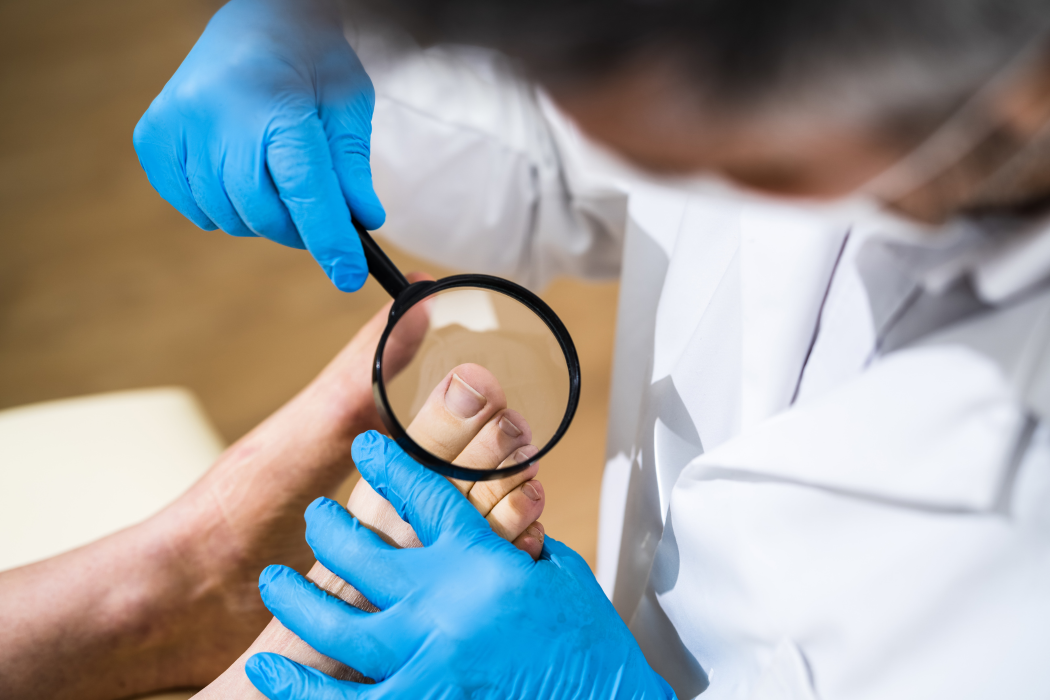


While many of the cases we see here at the Auckland Ingrown Toenail Clinic are fairly standard, there are a few that vary greatly from the ‘norm’, and could have resulted devastating consequences if they had been left untreated under the hopes that the ingrown nail would “go away on its own”, something many people do. This is a case in which Billy’s ingrown toenail was harbouring a bone infection that he didn’t know about, including his signs, symptoms and treatment.
When we first met Billy, he came in limping slightly, and seemed frustrated and uncomfortable with his ingrown nail, given that he’d been hoping that if he left it for long enough, it would resolve on its own. Billy is a middle-aged man, generally in good health. He said something along the lines of: “It’s just an ingrown toenail, but it feels like it’s taking over my life”.
Billy described his toe pain as persistent and worsening, especially when wearing shoes. The affected toe was visibly swollen and red, signs typical of an ingrown toenail, but there was a severity to his discomfort that raised concerns that we need to look further and rule out the possibilities of anything more serious – an important part of all of our ingrown toenail consultations.
Upon examining Billy’s toe, his podiatrist noticed the unusual degree of tenderness in the surrounding area, extending beyond the immediate vicinity of the toenail itself. The skin was quite warm to the touch. The toe was extremely sensitive, and there was notable redness around the area.
Given the intensity of the pain (and a gut feeling that this went beyond ‘typical’), we recommended an x-ray to rule out any deeper complications, such as a bone infection. We explained how, in uncommon cases, an untreated ingrown toenail could lead to more serious infections, potentially affecting the bone. Billy was surprised, but agreed to having the scan to rule out the possibility.
The x-ray showed a slight erosion visible on the bone beneath the toenail, indicative of osteomyelitis—a bone infection. This is very important information that shifts a proposed management plan dramatically. What was initially a simple podiatric issue now required a coordinated approach with Billy’s primary care physician to get the infection managed ASAP. Depending on the severity of the infection, treatment ranges from antibiotic management at home to IV antibiotics with a hospital stay to manual debridement of the area (in hospital) and more.
Billy ended up being admitted to hospital and treated, where he spent a few days to get the osteomyelitis (and the ingrown nail) under control. He had very close monitoring, as with osteomyelitis there is always a range of other risk factors, including serious ones like sepsis.
We didn’t end up seeing Billy again until several weeks later after the infection had cleared, and the toe was showing good signs of healing. We spoke to Billy about what the bigger picture looks like for his ingrown toenail, given this was not the first time this toe had had an ingrown toenail – he had been experiencing ingrown nails on and off again for almost a decade now.
We agreed that once the toe had fully healed and he was in the clear (so that it would be safe to do so), we would perform a partial nail avulsion (with a chemical matrixectomy) as a permanent solution to Billy’s ingrown nail to help eliminate the risk of this situation arising again in the future – as well as saving himself the hassle of periodically dealing with the pain and discomfort of ingrown nails.
Recognising the signs and symptoms of osteomyelitis early can be crucial for timely treatment and prevention of more serious complications. Potential signs of osteomyelitis may include:
These symptoms warrant immediate medical attention, particularly if they persist or worsen despite taking care of the initial cause, such as an ingrown toenail. Early diagnosis and treatment are vital to managing osteomyelitis effectively and preventing further health complications. If you experience any of these symptoms, we recommend seeing your podiatrist or doctor.
.png)
This Mother’s Day, consider a practical, medically safe, and confidence-boosting gift: a professional KeryFlex nail restoration treatment. It’s a simple, effective, and medically safe way to instantly transform the appearance of toenails.

We treat a lot of ingrown toenails here at the Auckland Ingrown Toenail Clinic. So, with approximately 10% or more of the adult population harbouring a fungal nail infection, it’s not uncommon that we see many ingrown toenails where a stubborn nail fungus has also infiltrated the nail. So how can you tell, what can […]

Ingrown toenails can be painful and uncomfortable, so identifying the ‘red flags’ of ingrown nails early on can be helpful in getting prompt treatment and reducing the risk of complications. So what are the top red flags you should be looking out for? One: Persistent Pain and Discomfort One of the most significant red flags […]
Keeping your family on their feet and helping them to walk, run, play and exceed their goals is why we love getting up in the morning.
Ground Floor, One Health Building
122 Remuera Rd, Remuera
Auckland 1050, New Zealand
| MON - FRI | 7:30am – 6:00pm |
| SAT | 8:00am – 4:30pm |
| SUN | Occasionally available |
Make an Appointment
Online Schedule